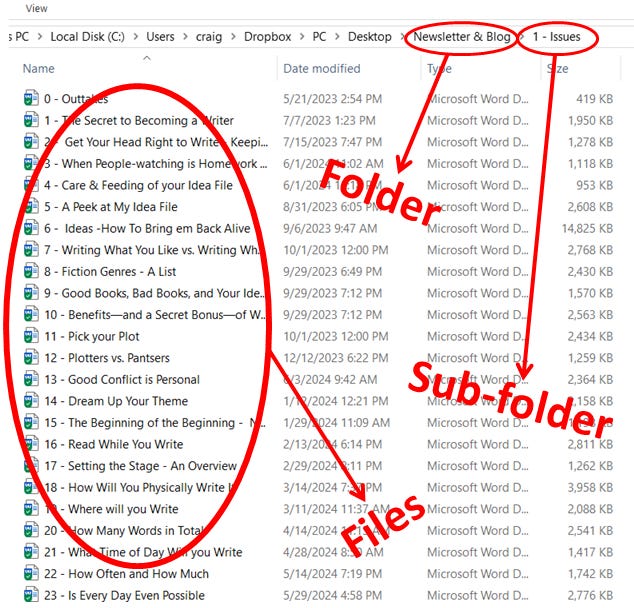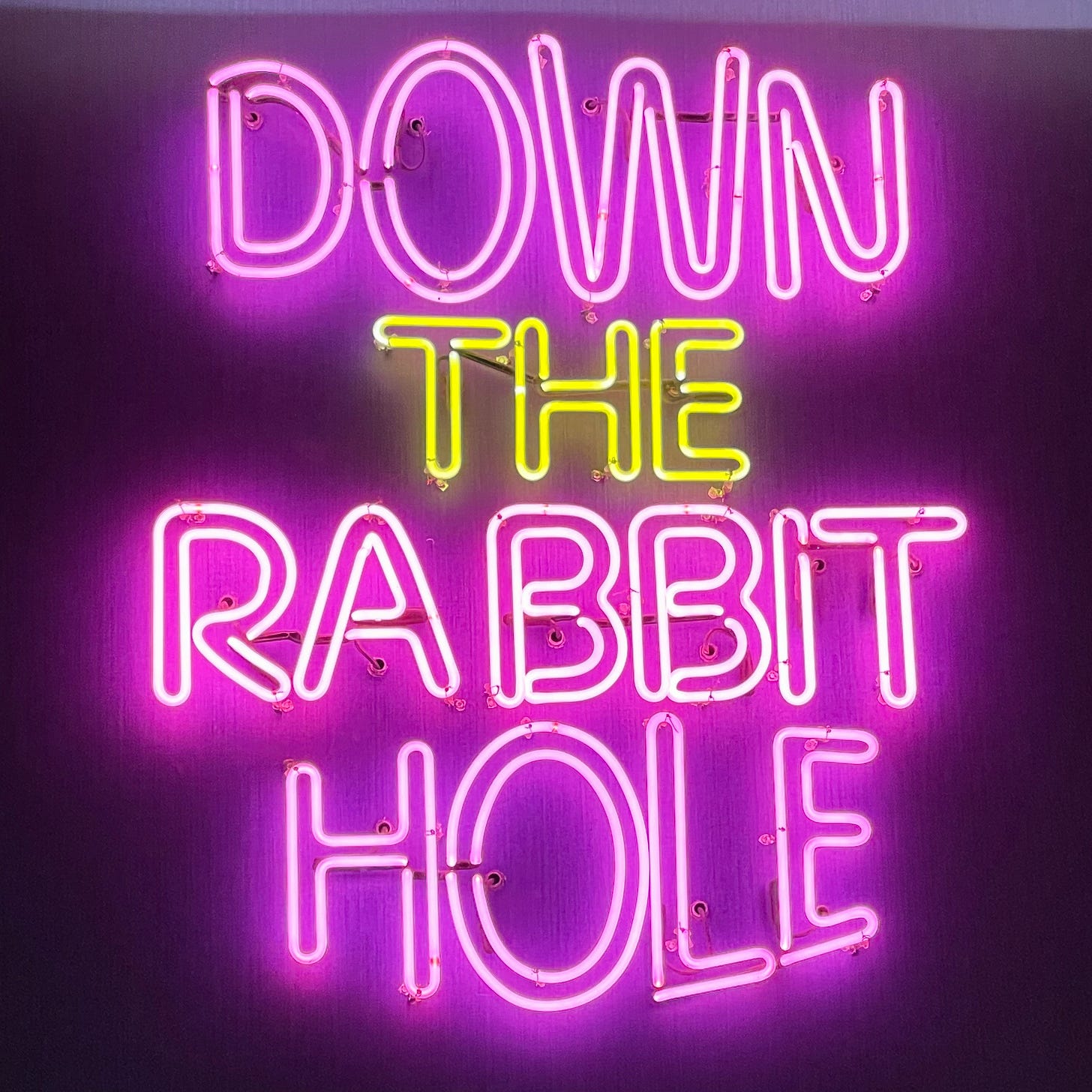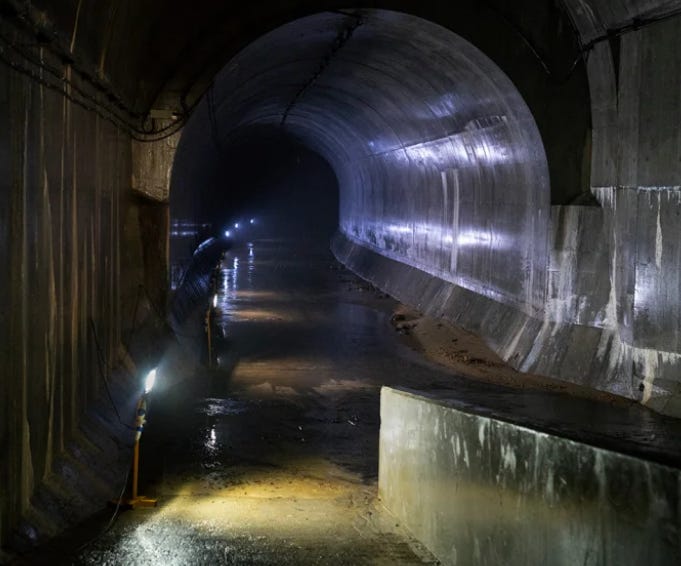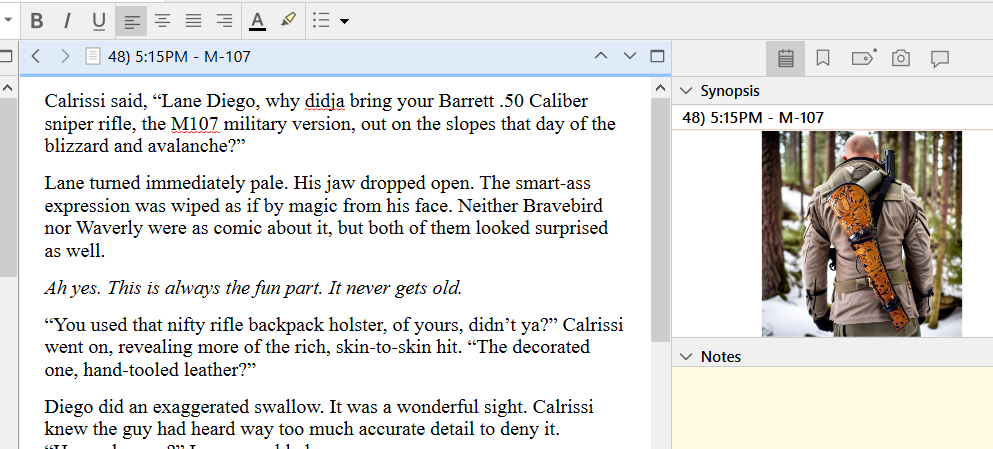Pre-writing Research: Organizing and Using It on the Page
Issue #35, Pre-writing Research 3 of 3
Now, it’s time to get organized.
If you’re writing longhand, file your research notes neatly and alphabetically in folders (take a peek at Writing Rhythm Issue #18 if you’re still vacillating—wavering or hesitating—between writing in longhand or by computer).
If you’re using Word or any other word processor, you’ve got to be just as organized or you’ll lose information. As an example, the graphic shows the system by which I save and store this newsletter, Writing Rhythm. It’s written in Word. Each article (file) is numbered and named. They go under the subfolder marked “Issues,” which is then under the main folder marked “Newsletter and Blog.”
This might seem self-evident, but I’ve got friends—and good writers, mind you— who randomly store files and often lose them. Why spend time researching if you’re going to misplace the results?
There are two ways to use the valuable facts you’ve uncovered:
…or…
Nothing’s wrong with either. I’ll elaborate with examples.
Here’s my favorite program for novels again, Scrivener (see Writing Rhythm Issue #18). I’ll use it to show a couple of examples of how I make research facts work.
Scrivener has a dedicated research area where you drop in files. This screenshot shows some of the specific subjects about which I needed me some educating for my book “The Suicide Killings,” the second in my Touch series.
Here’s a case-in-point regarding setting. My psychic detective, Michael Calrissi, is chasing down the facts on a prolific serial-killer back in his childhood town in Texas. Because I’d visited Houston a number of times, I decided to set it there, or near there. I hadn’t zeroed in specifically at the outset. So off I went researching Houston, including population, building types, culture, etc. You’ll see it as the first subfile under Research, above.
Right away I discovered how much rainfall Houston has (I always check two separate sites for research facts in case one is an outlier).
This got my imagination going, and then and there I determined to make a very rainy environment a part of the plot. That meant I could:
…and simply set it in already-existing-in-reality Houston, or…
I opted for the latter use, made up the setting of an entirely fictional Texas town, “Thunderclap,” and located it not far from Houston.
I added a nearby mountain which would cause storms clouds to slow and dump more rain there (all of which I researched to be sure it was possible and likely). That got me thinking about storm drains, and how excessive amounts of water might be channeled away. I suspected this was a time when the lure of the rabbit hole might not be a bad thing. So I allowed myself to go off on a research tangent.
Like that, I was researching storm drains, like this huge one in Hong Kong.
Soon I had imagined a fact-based, Hong-Kong sized storm drain system under the streets of a fact-based, made-up town called Thunderclap. It was a very fun setting detail, and this system becomes an important part of the plot, with several key scenes set there. And it’s an example of research facts dictating the story.
Not all rabbit holes are a waste of time.
BTW, notice all the pictures? Pictures can definitely be part of your research, too.
I love capturing photographs online that help illustrate scenes in my mind. You can embed pictures in Word. But even better, in Scrivener they’ll always stay on top of your chapters so you can see them for continual inspiration as you write.
Here’s my drain pic, inserted into the program so I could see it next to the chapter as I wrote it.
Here’s one more example from “The Snowfall Snuffings,” in which a suspect has a unique rifle holder which gets described in the chapter. You’ll understand why it was helpful to have a guiding picture on top as I worked up the dialogue.
The creative right side of our brain relies on the more methodical left side to keep things organized. Find and stick to a research system. Your inner writer won’t have a chance to shine if you spend all your time searching for lost facts, wavering and hesitating and going back and forth...
…and hey. That reminds me of this issue’s vocabulary selection.
What is to vacillate?
Action Plan
On X (formerly Twitter), I post a new daily rhyming writing tip on which many of these issues are based. Follow—you know you want to.
Next Up:
36) Character Backstory: Yea or Nay. Backstory 1 of 4. See you in two weeks!
Craig
























Thanks for this!